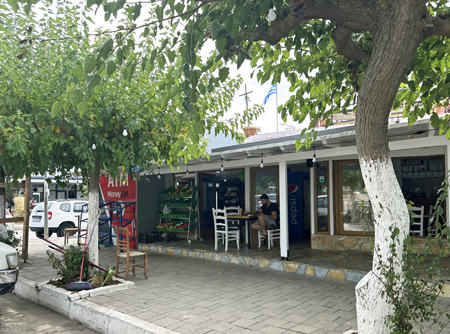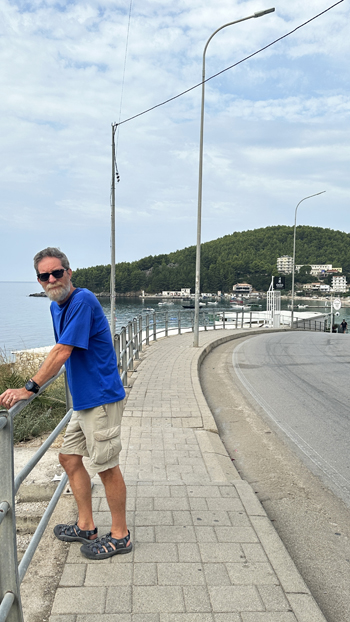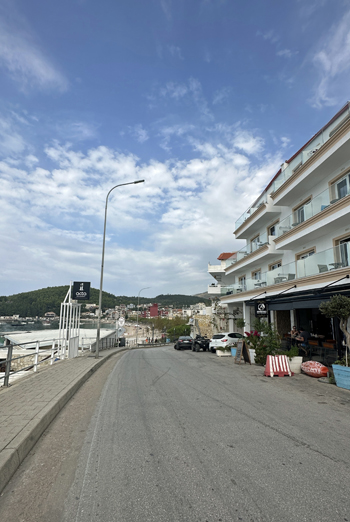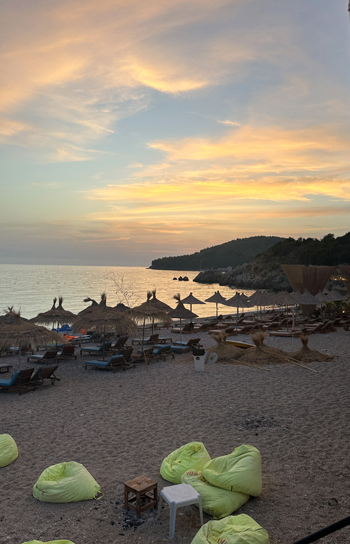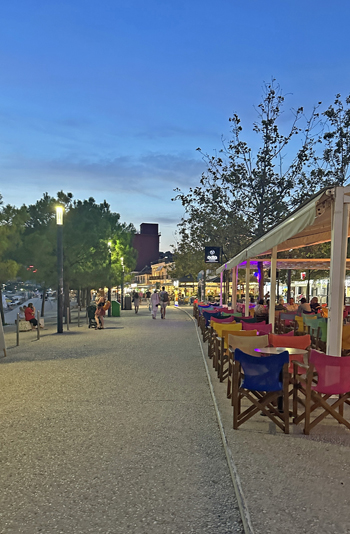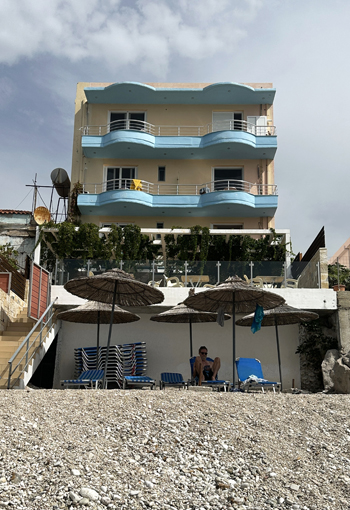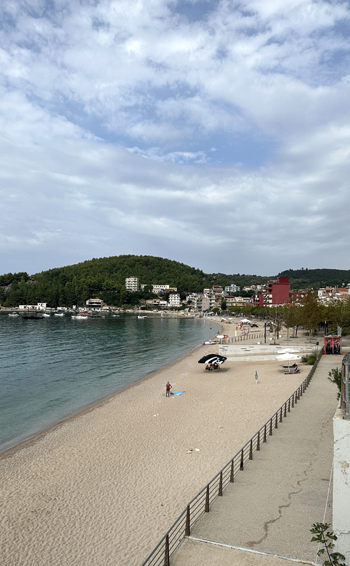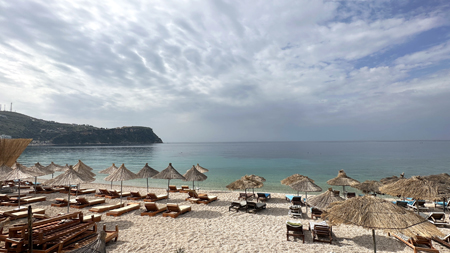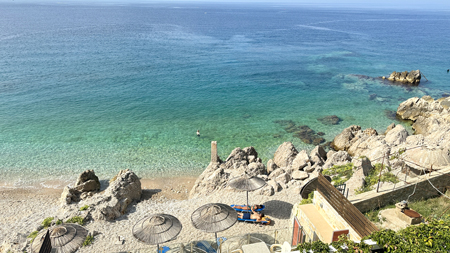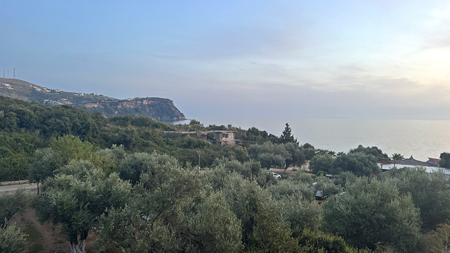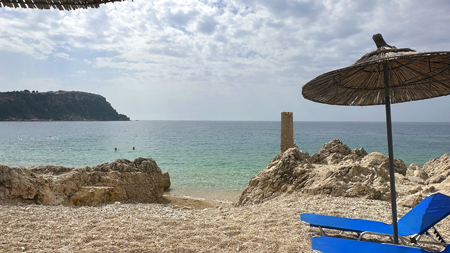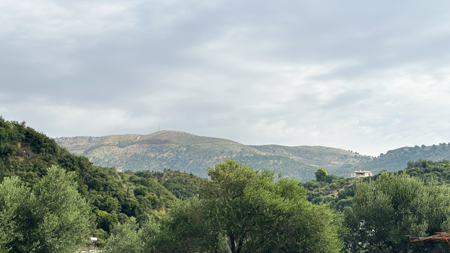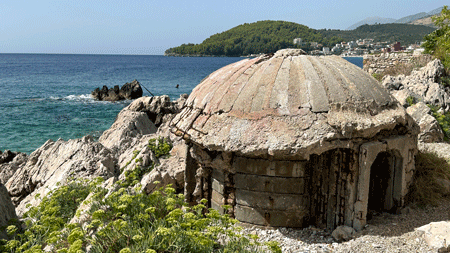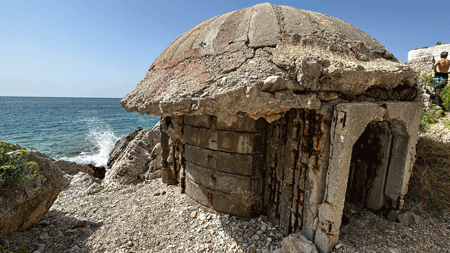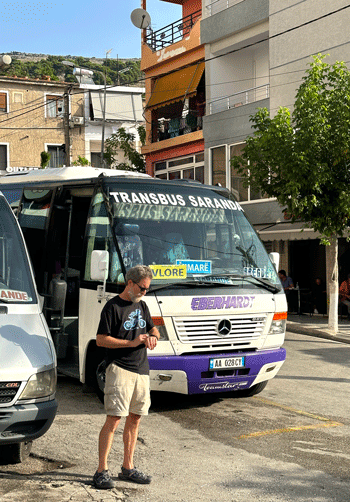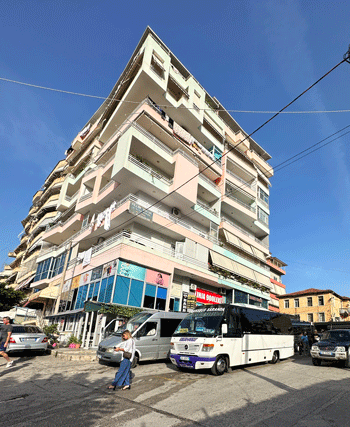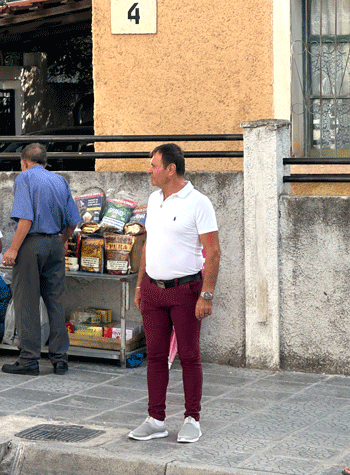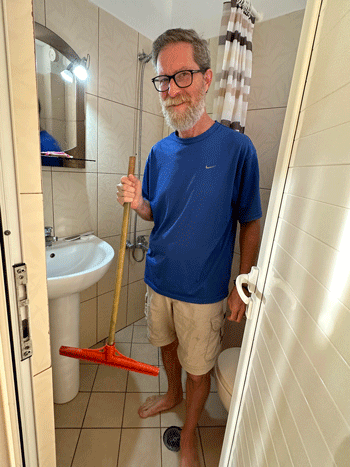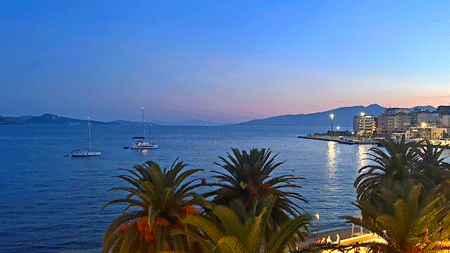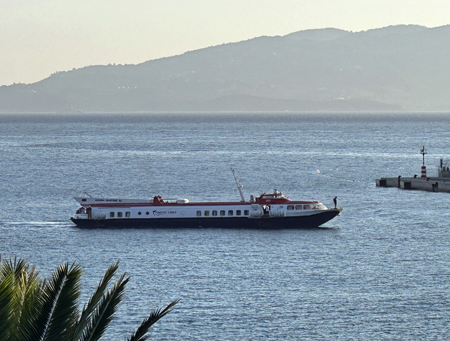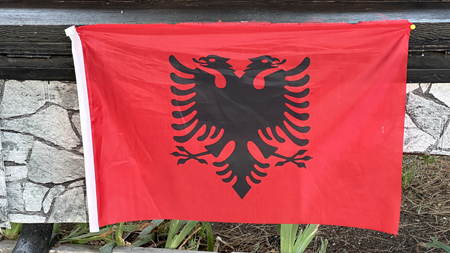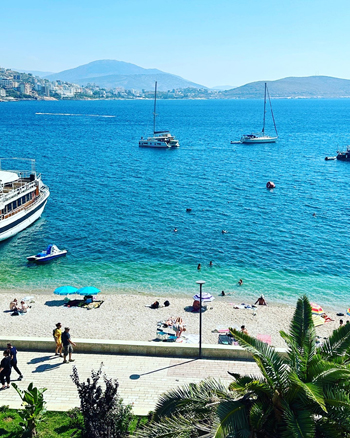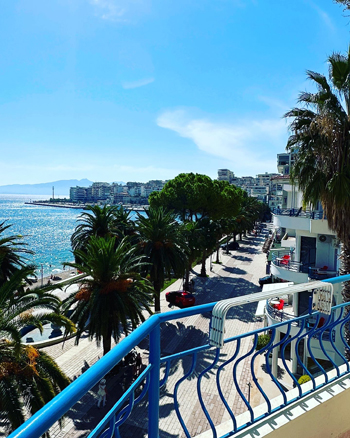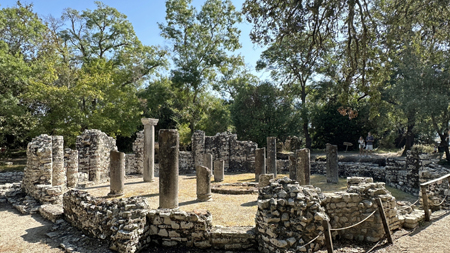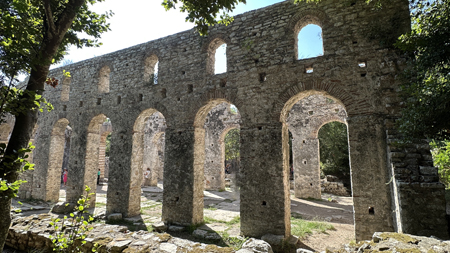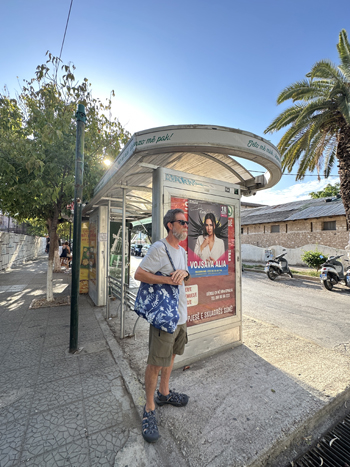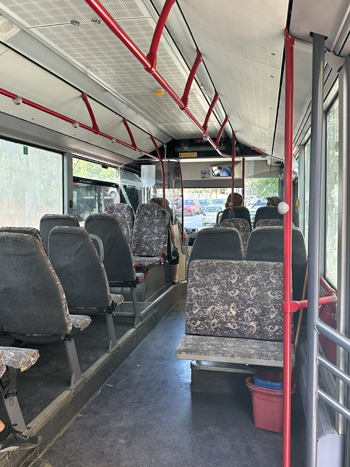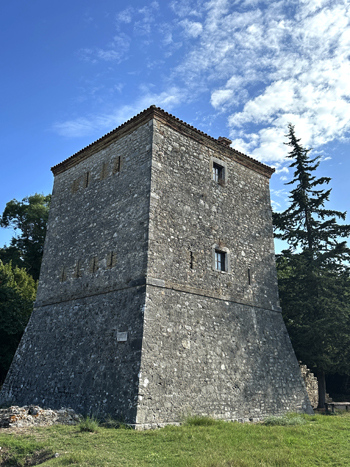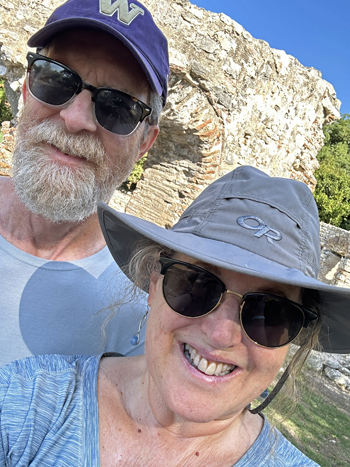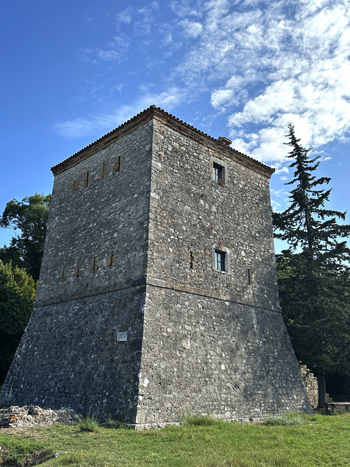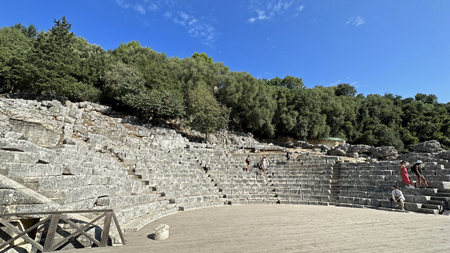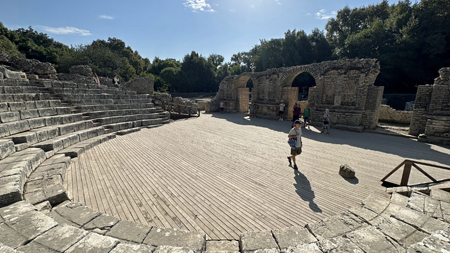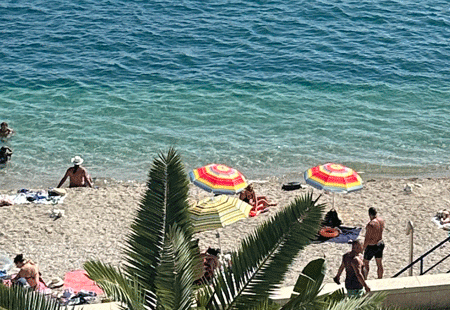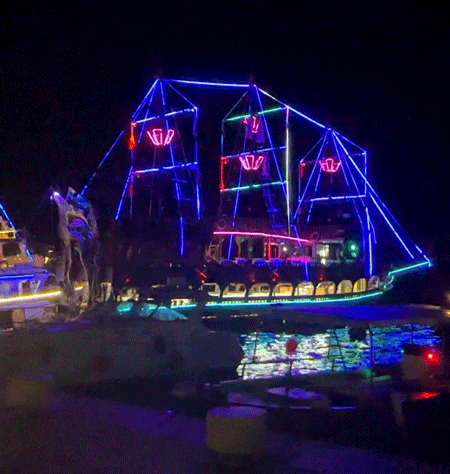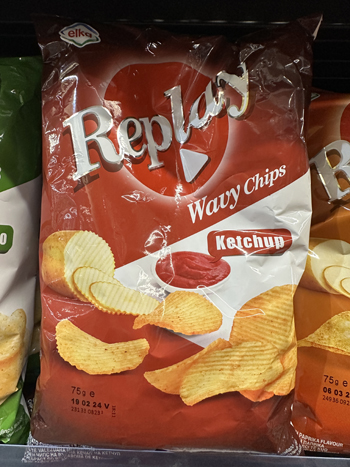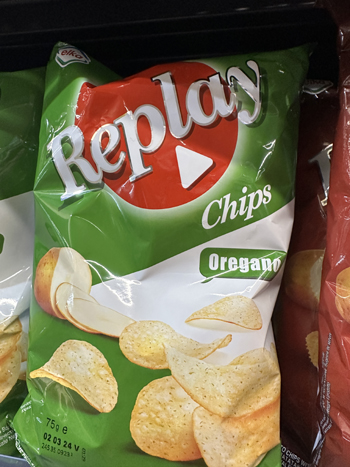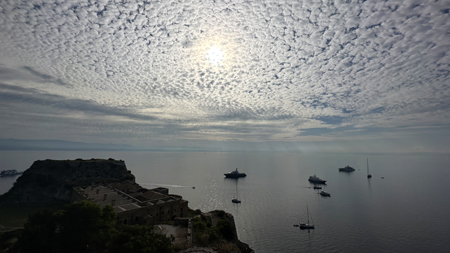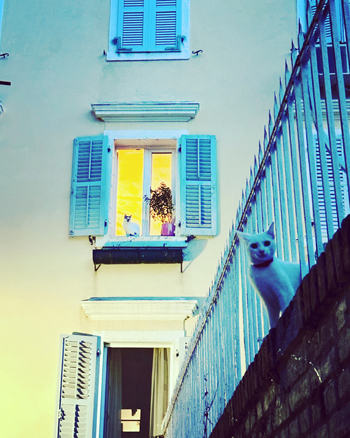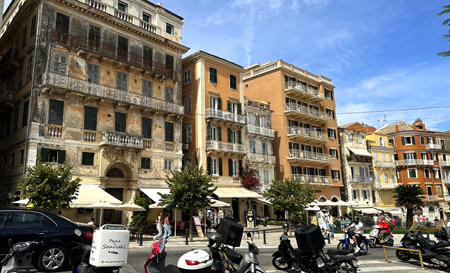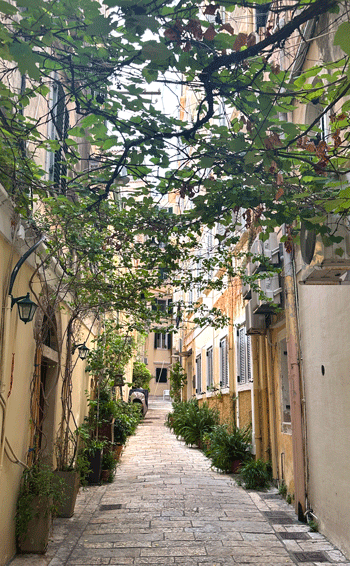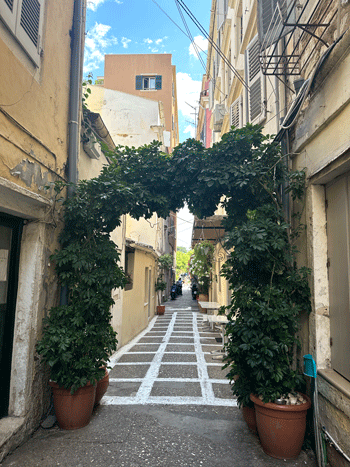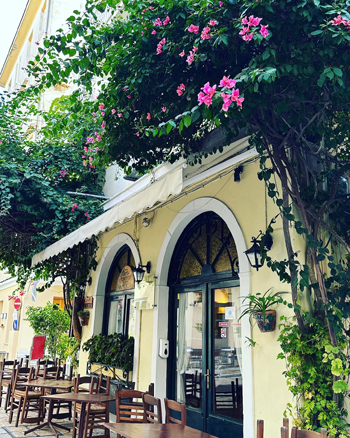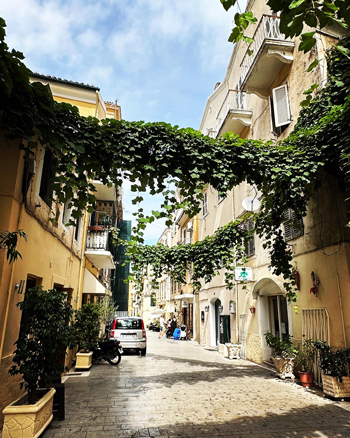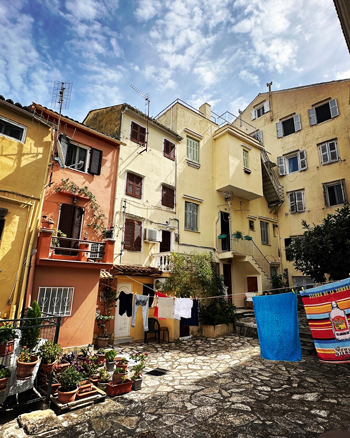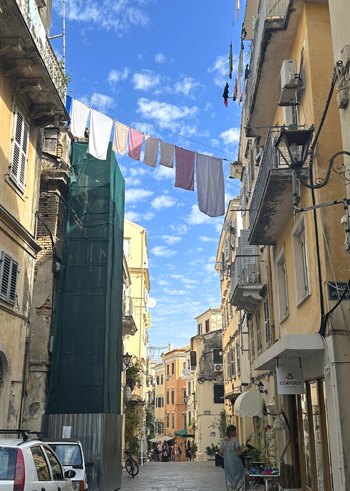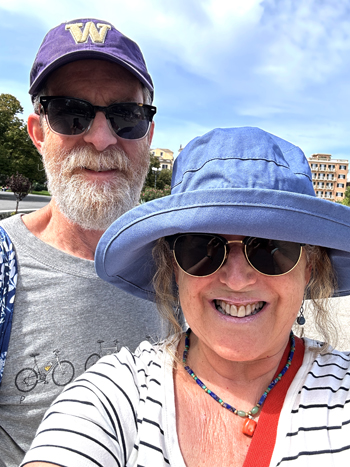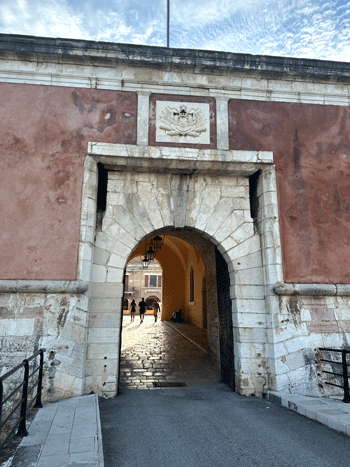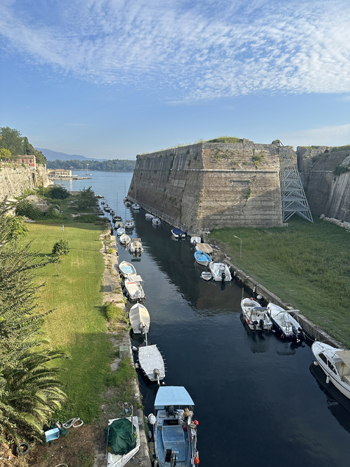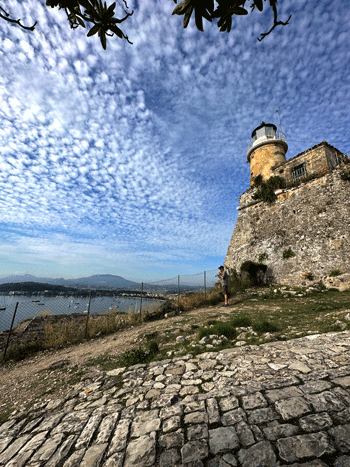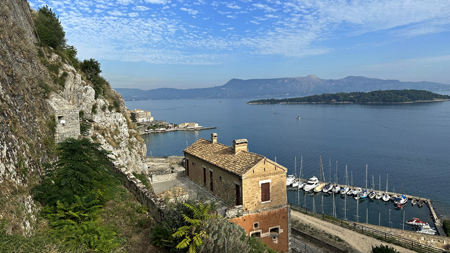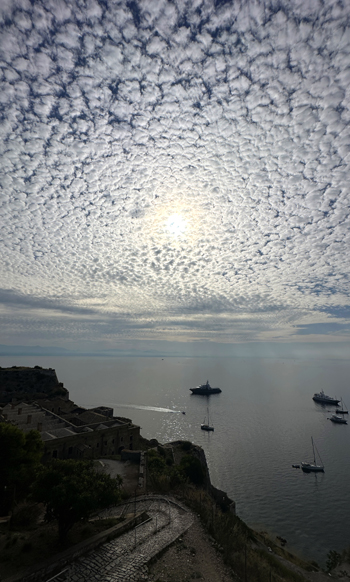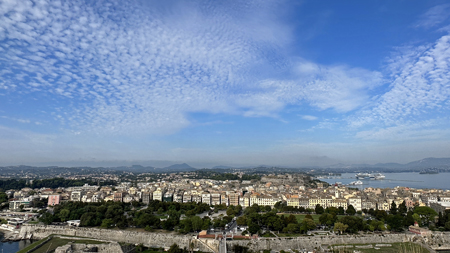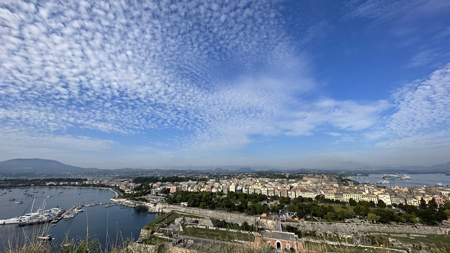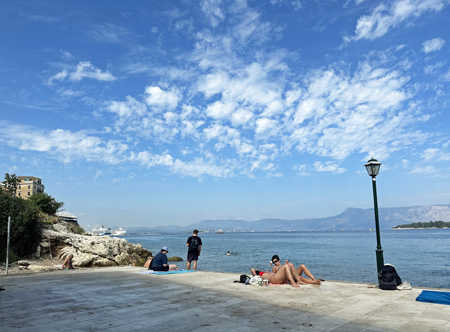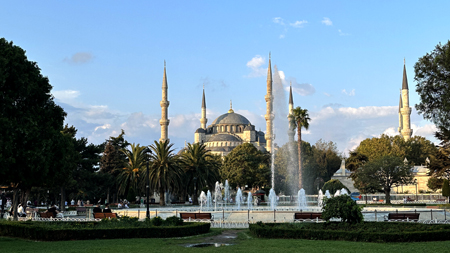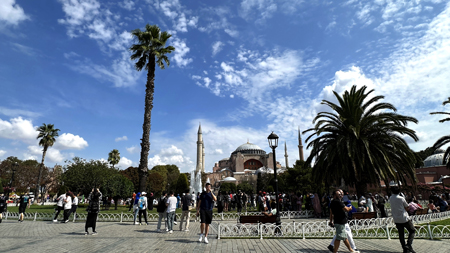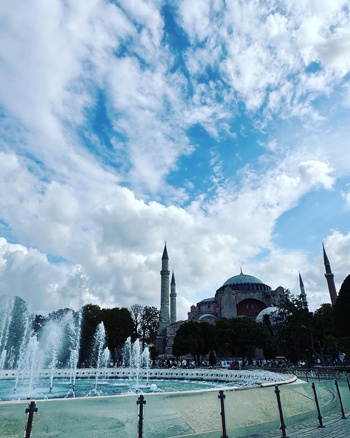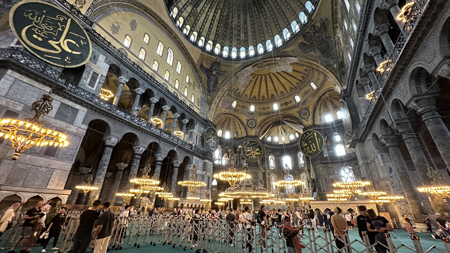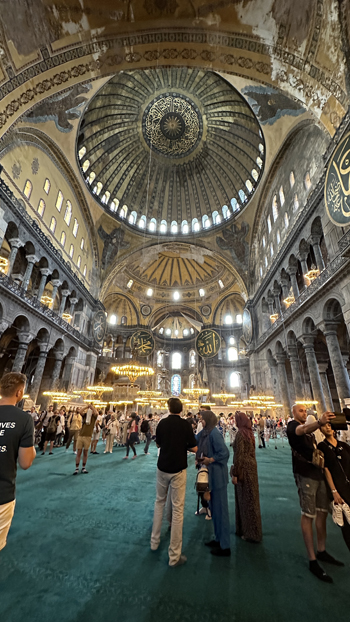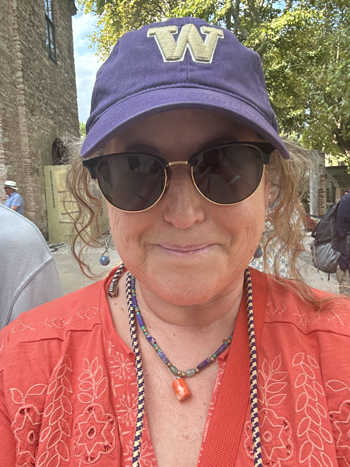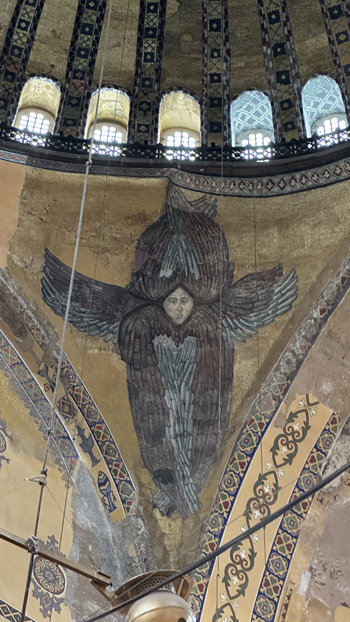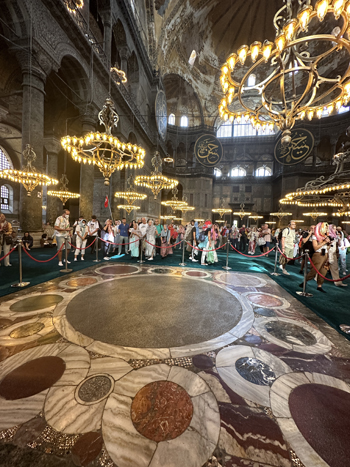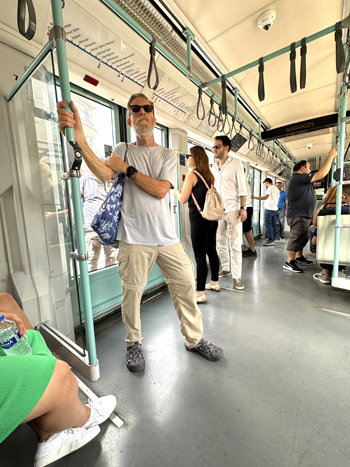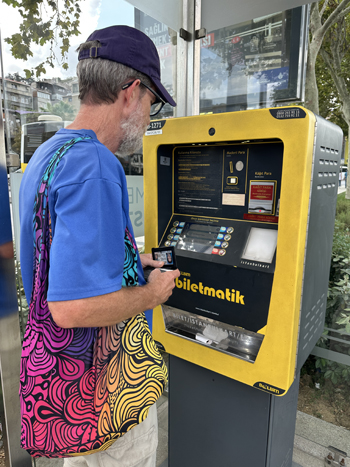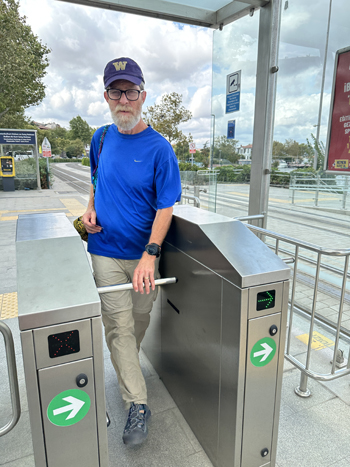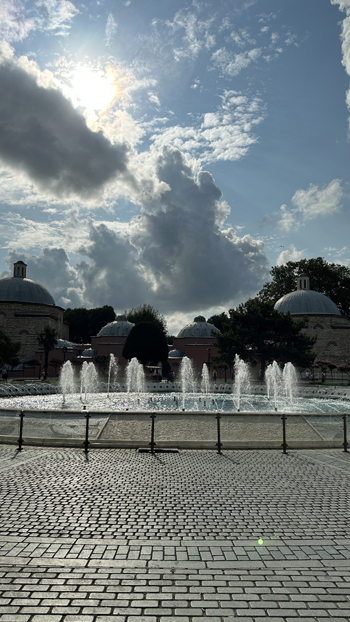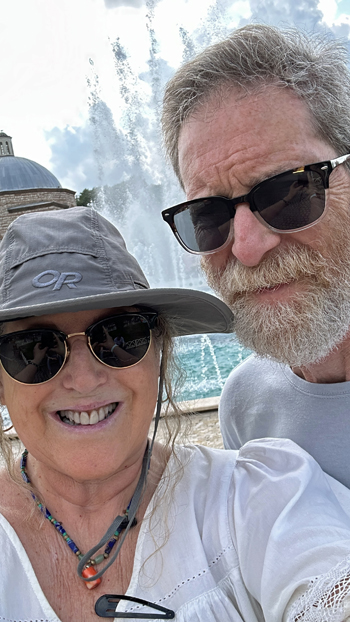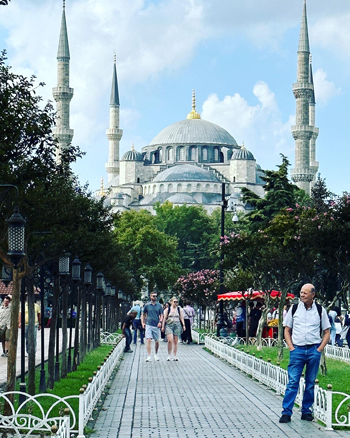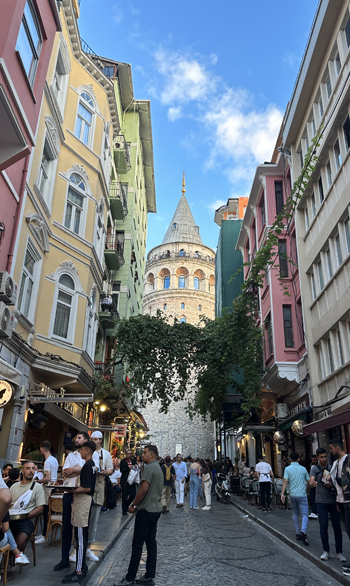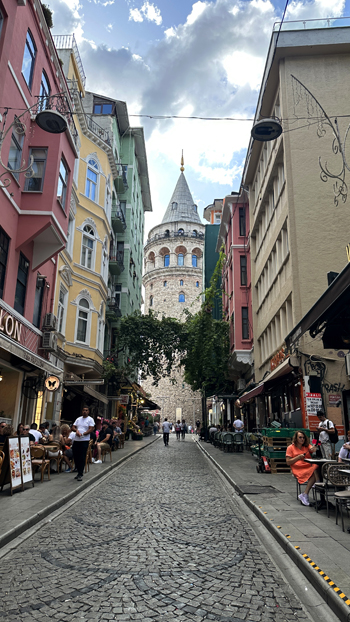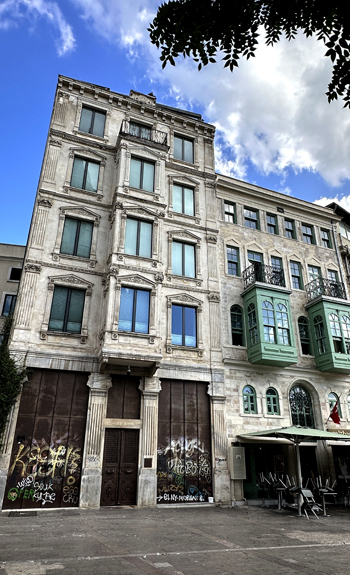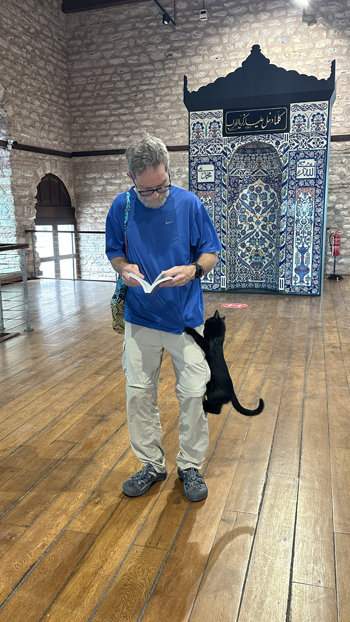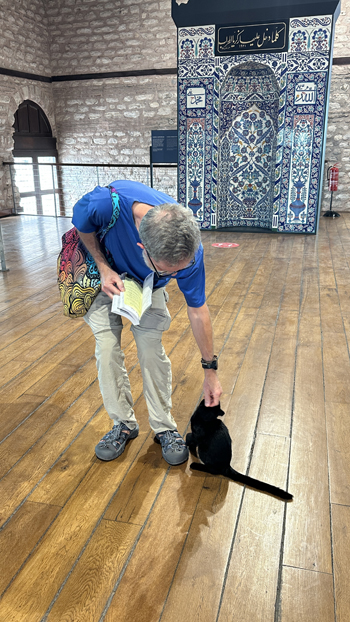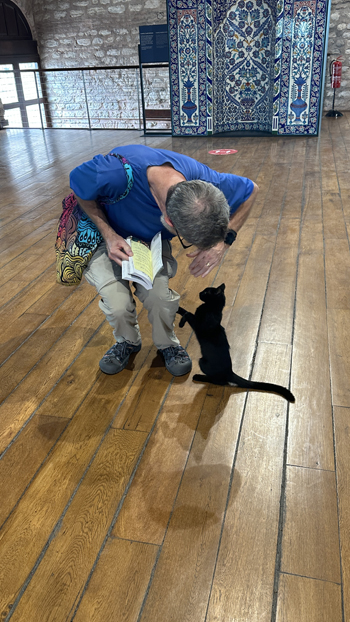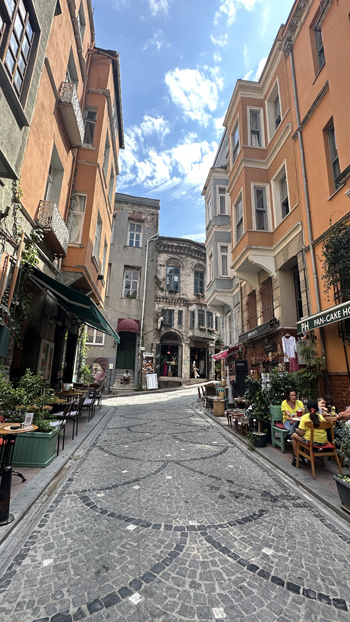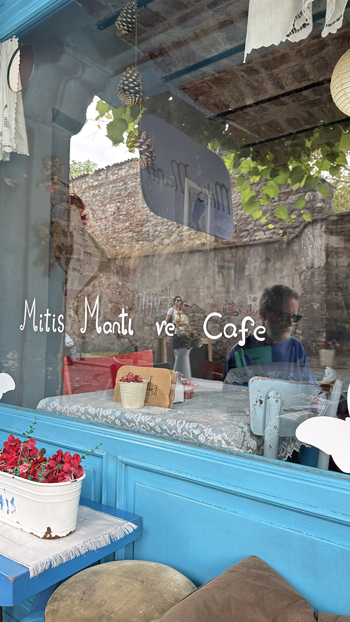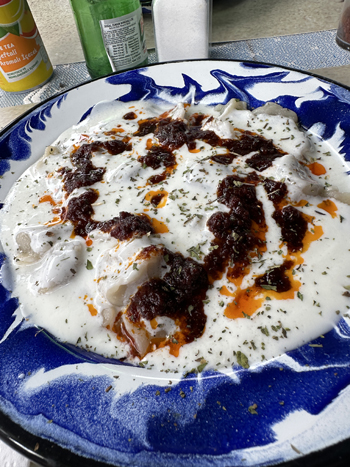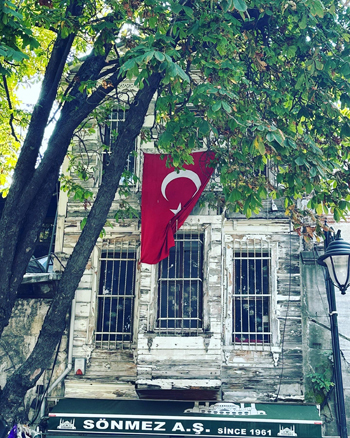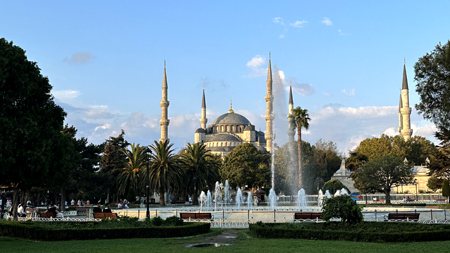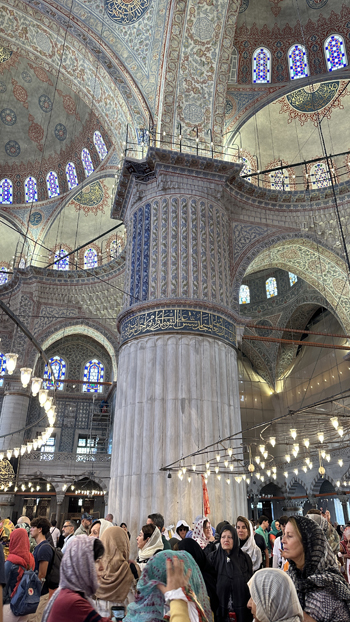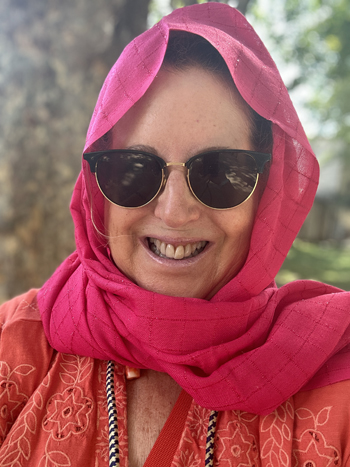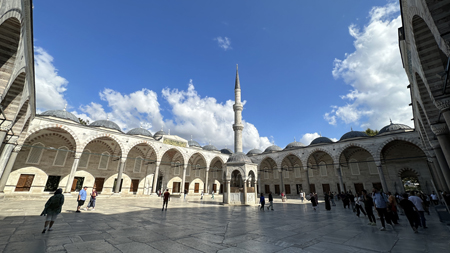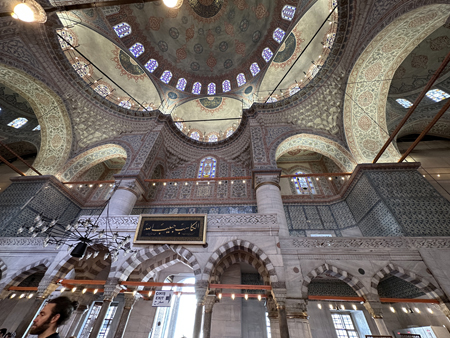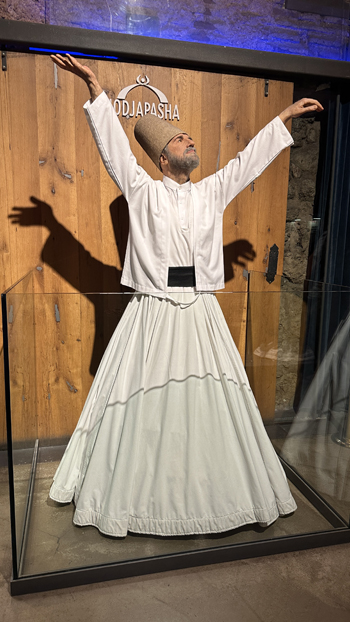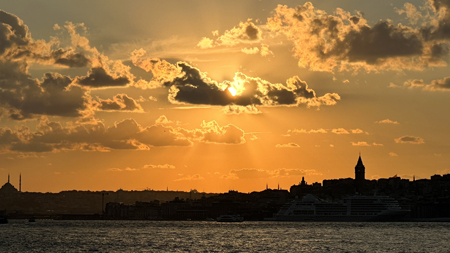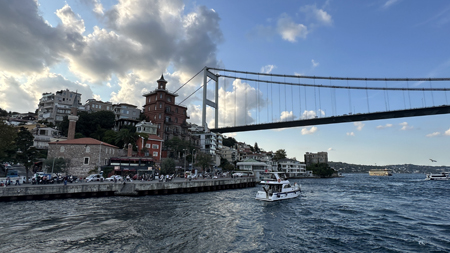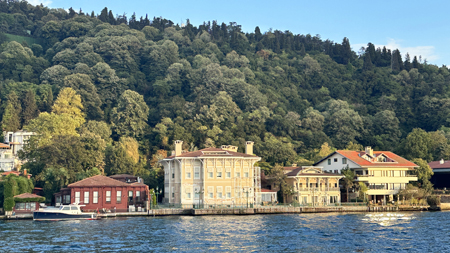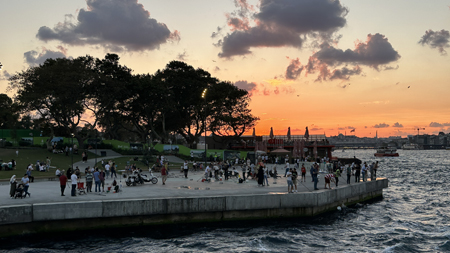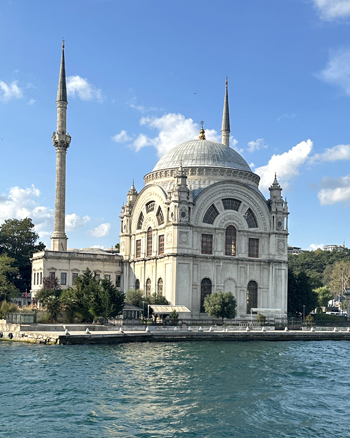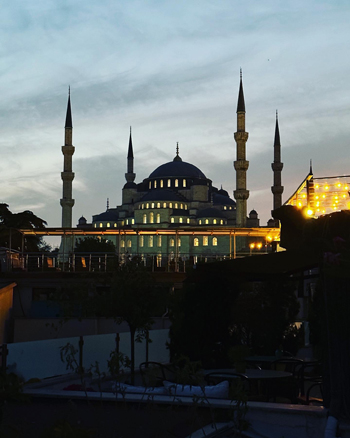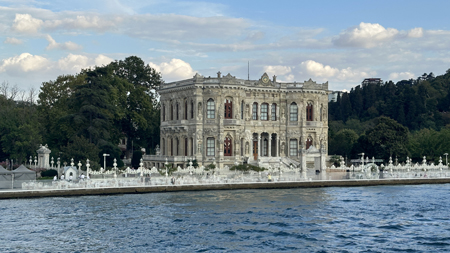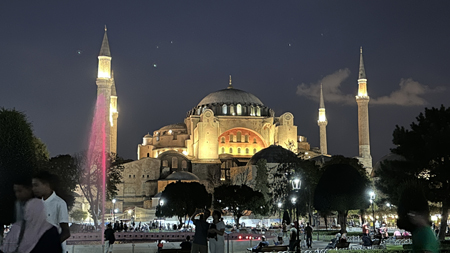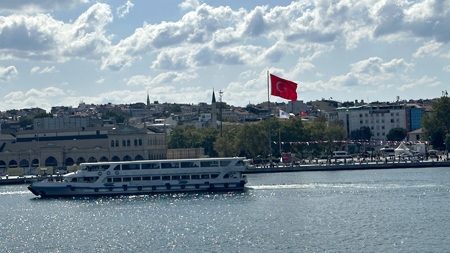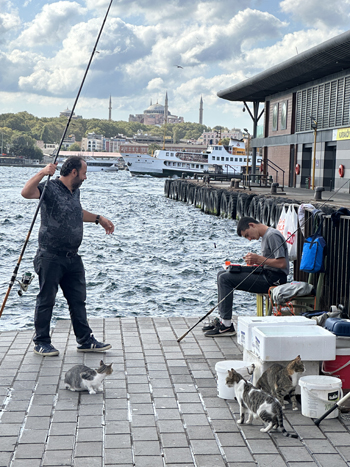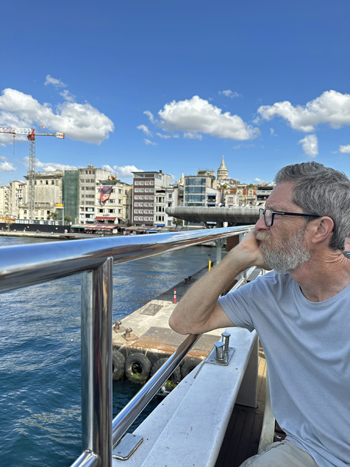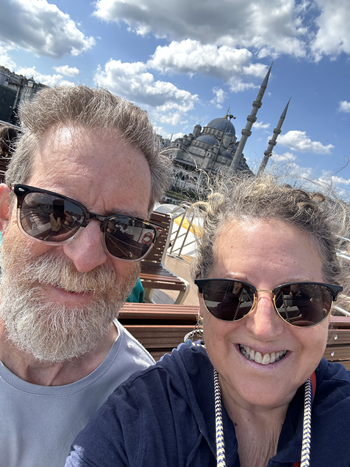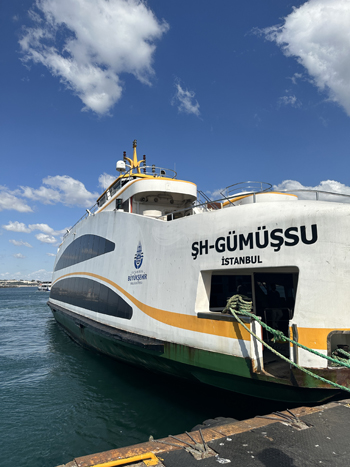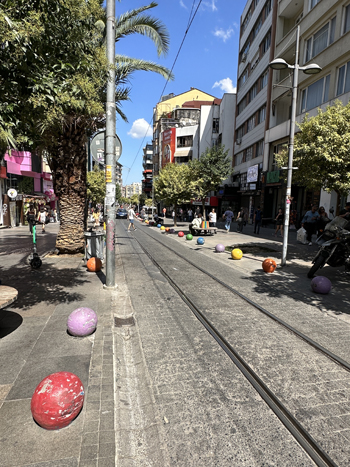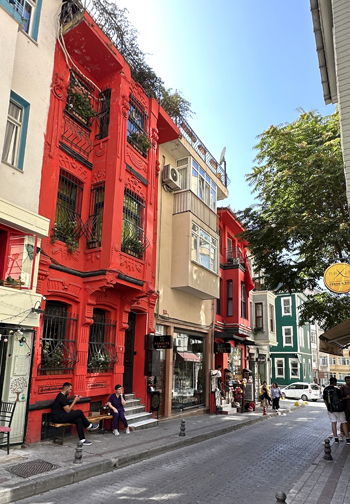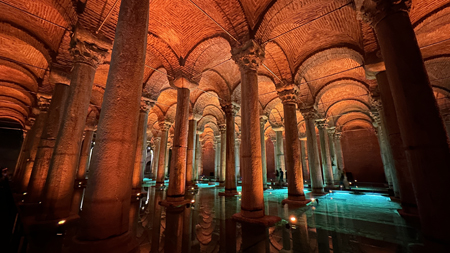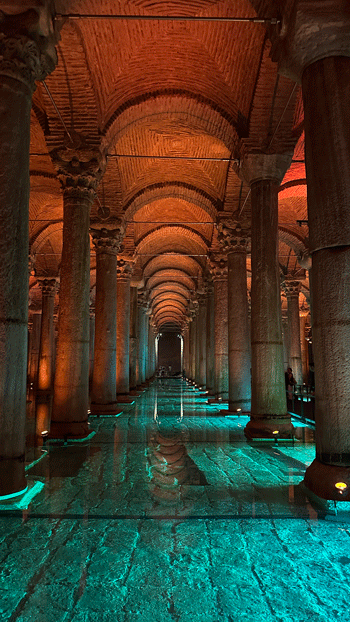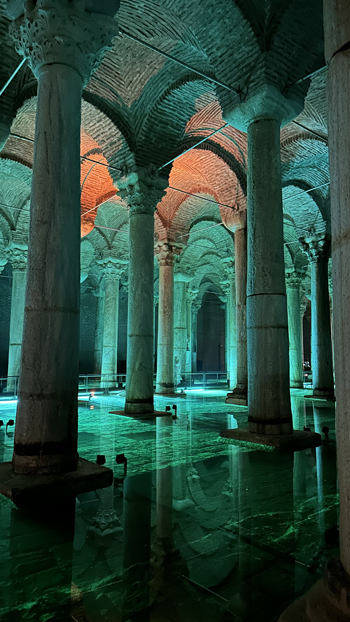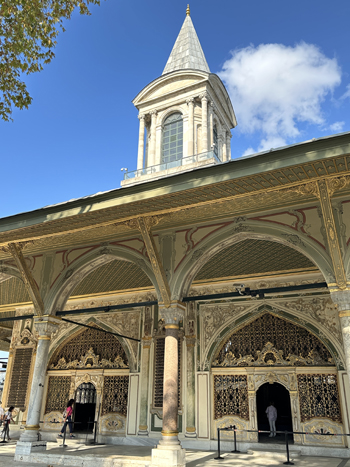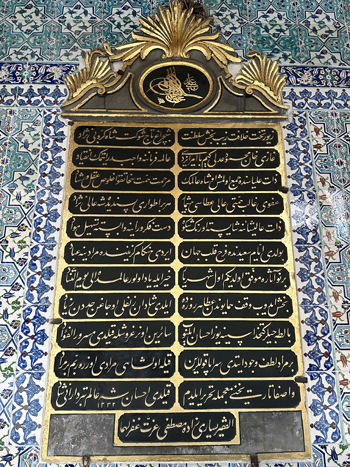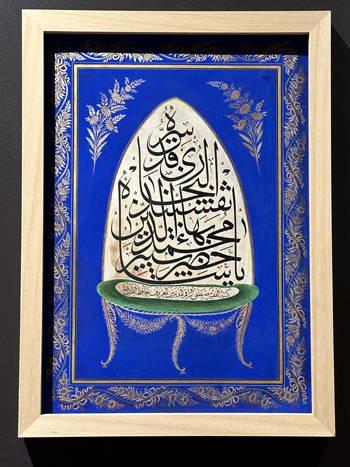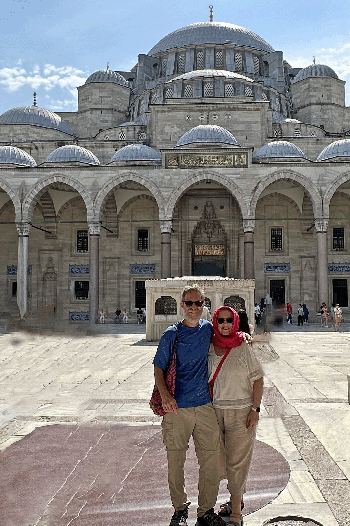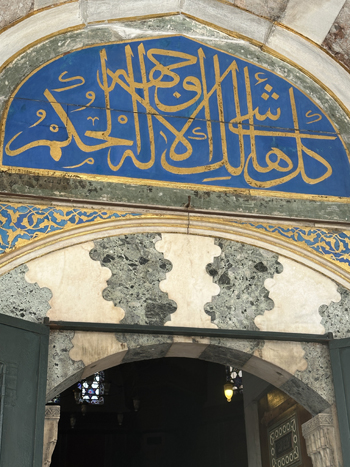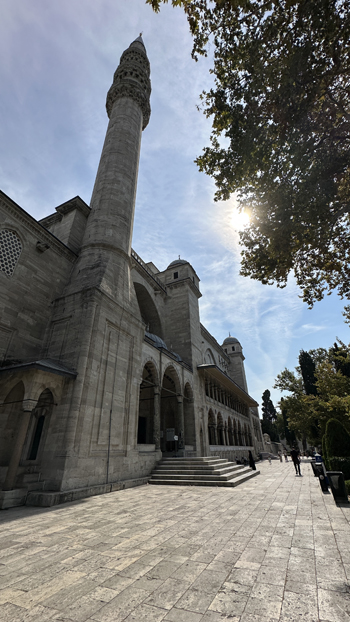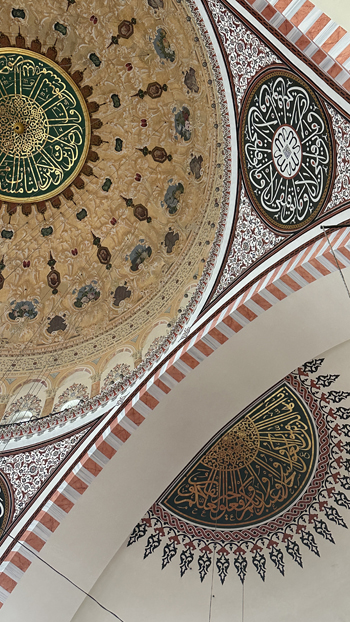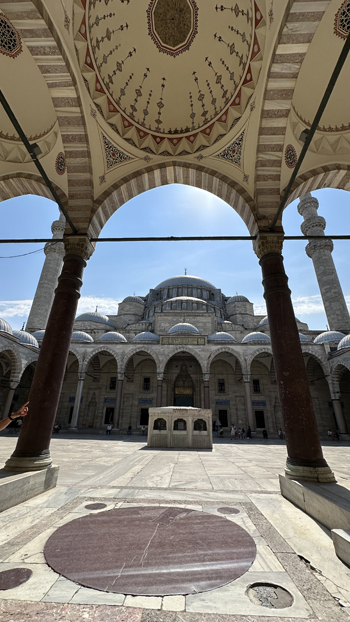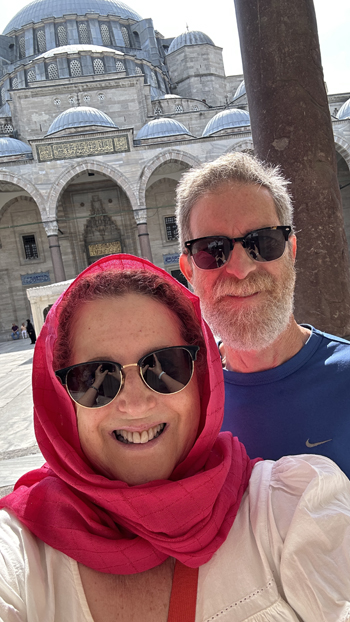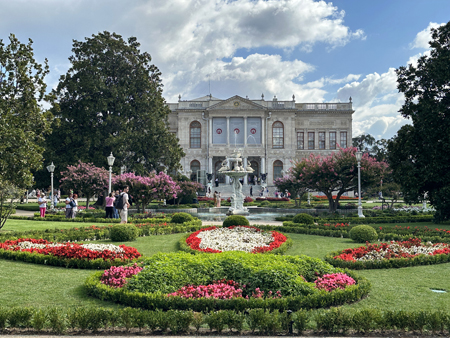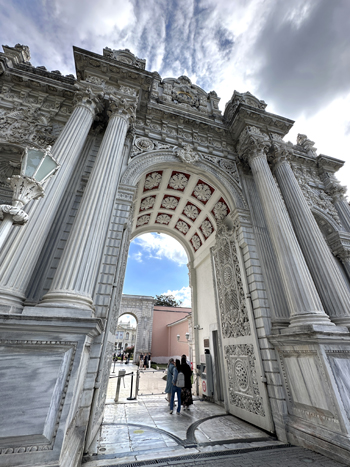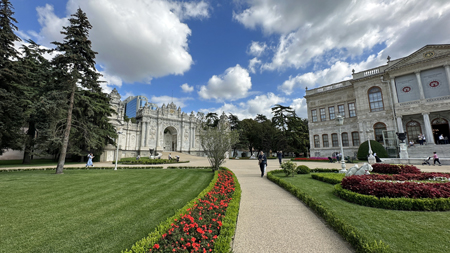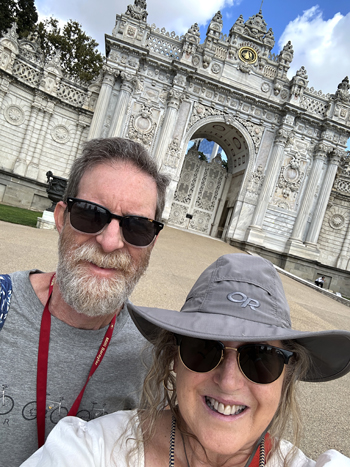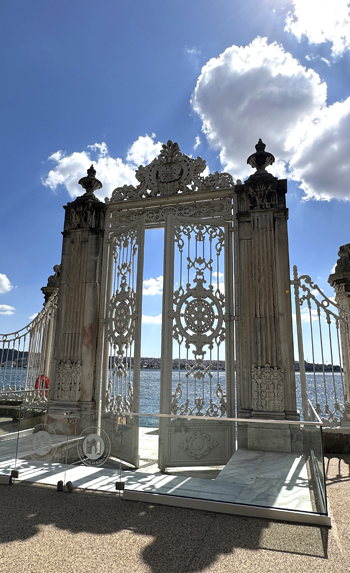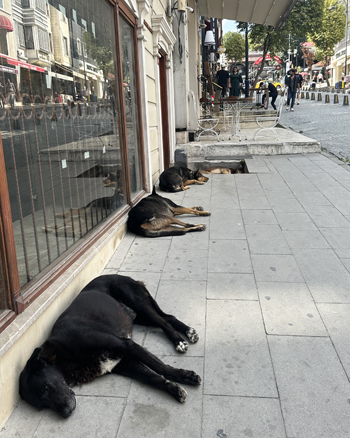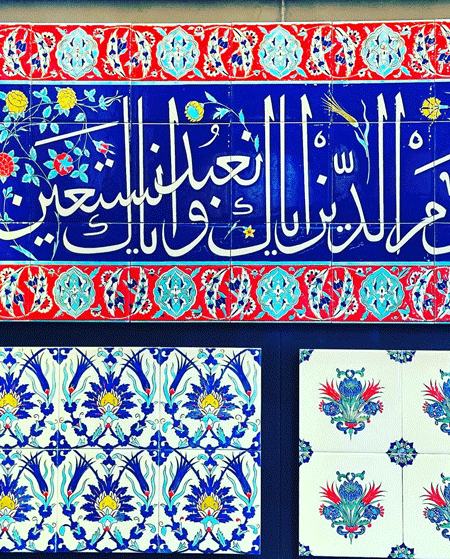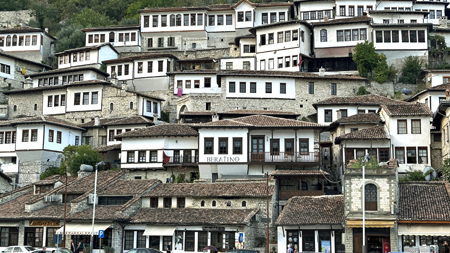
September 23-26, 2023
The Windows of Berat
Berat, the city of a thousand windows, lies on either side of the Osum River in the interior of Albania.
Technically speaking, according to Bruno, our free walking tour guide (we tipped him at the end of the tour), there are not a thousand windows. In fact, he said that the windows have been described, in the Albanian language, as “one over one” since they look layered.
Apparently, this Albanian description of the windows, when translated to English, sounds a lot like “a thousand”. So there you have it. Some English speaking tourist overheard incorrectly and started the rumor of a thousand windows, and it stuck.
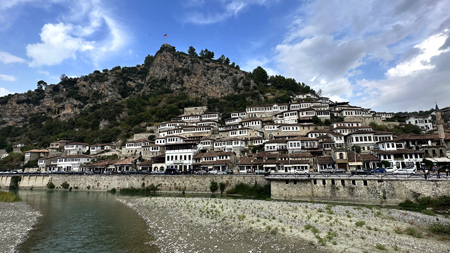
Both sides of the city are full of whitewashed ancient dwellings dating back to the fourth century. And, as noted above, both have lots and lots of windows. It’s quite a sight to see, especially at night.
Historically, one side of the town is Christian and the other is Muslim, split by the Osum River. The two sides of the town are practically mirror images of the other.
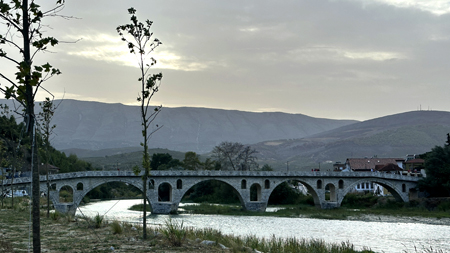
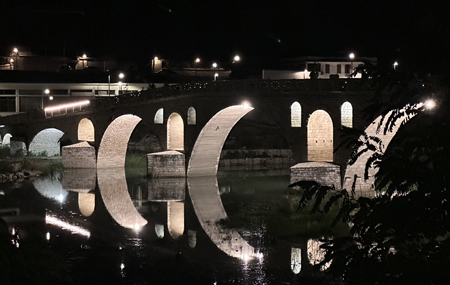

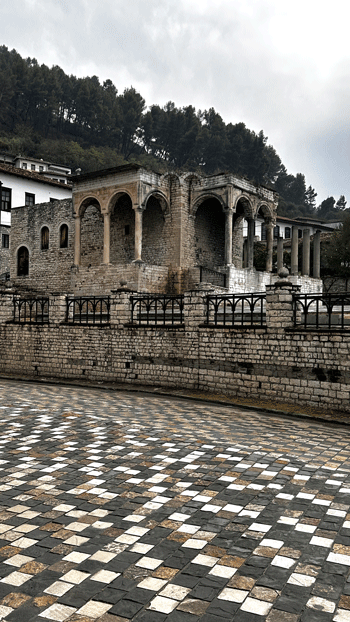
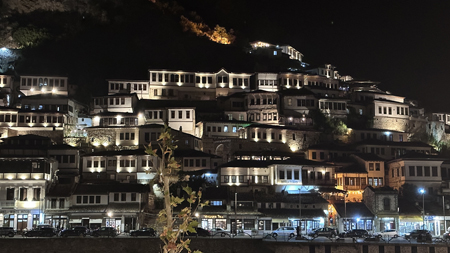
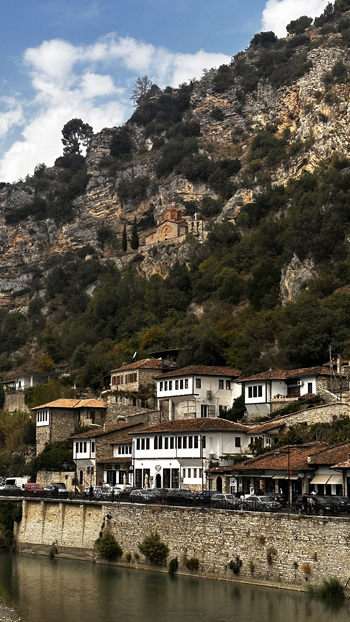
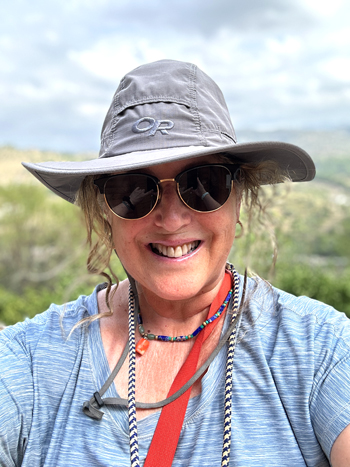
The Berat Castle
We visited the Berat Castle that resides on a very high mountain above the city of Berat. It’s still a living Castle, with a few hundred people still residing within the Castle walls.
There were sweeping views from the castle. We could see all of Berat and the surrounding mountains.
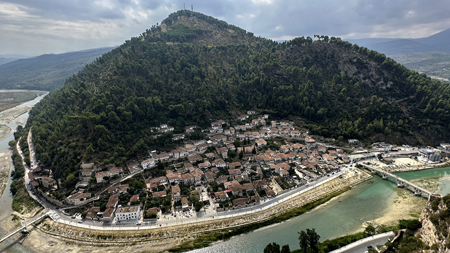
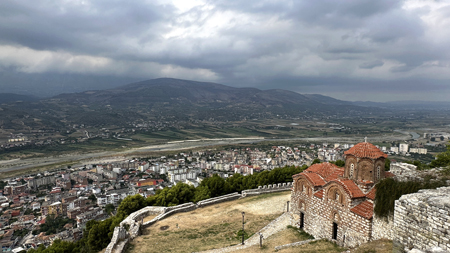
Early in the afternoon we started our way down from the Castle towards the town very far below. It had just started to rain. The only way down is on a very steep cobblestone road.
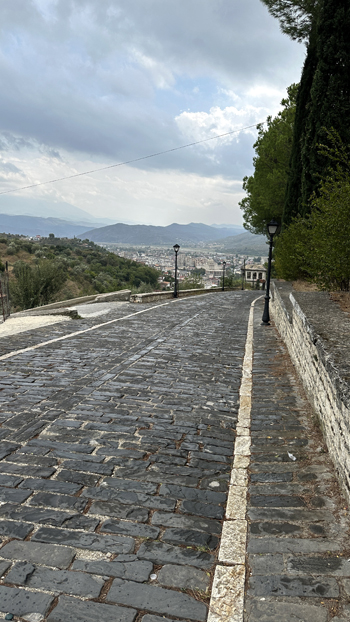
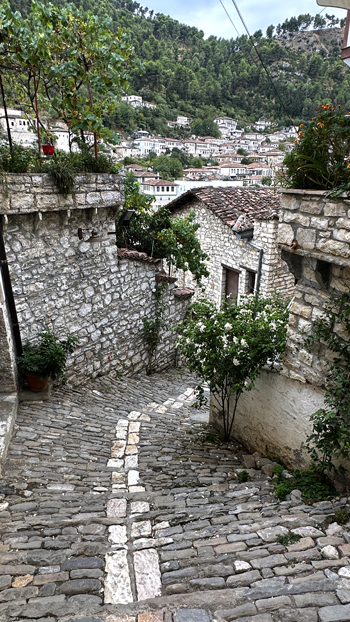
The cobblestones, especially the flat, white stones, can be very slippery when wet. We were carefully watching every step and taking things slow.
The Frenchman
After just a couple of minutes, a very nice car pulled up next to us. A man leaned over and asked, through the opened window, “Want a ride down into town?”
I looked over at the thirty-something year old driver. He was clean cut, and didn’t look like a serial killer, as far as I could tell. He was driving a very nice and newer model Audi.
“Yes, for sure”, I happily replied.
Hitching a Ride
From behind me, I heard Steve ask, “Who is that?”
“I don’t know”, I replied, as I wholeheartedly jumped into the backseat. Steve was close behind me, skootching on in. I immediately noticed how pristine the car was, and the beautiful, tan leather upholstery. For some reason that was reassuring. Bad people don’t usually drive such a nice car, right? Unless they are a very successful bad person, I suppose. Anyway…
Turns out our savior is a Frenchman who runs a tour agency for people in Kosovo. He lives in Kosovo eight months a year and Berat, Albania, the other four (during the tourist season).
Our Savior
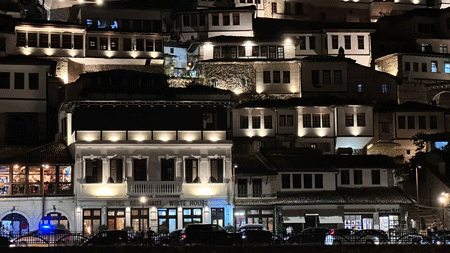
He drove us all the way to our hotel and dropped us off. He saved us from slipping and sliding down the side of the mountain for thirty minutes, getting into town wet and most likely, quite ornery. What a nice guy.
He had pointed out the “only shop” in town that sells authentic, handmade souvenirs, so later in the day, when the rain had subsided, we took a walk to check it out. There wasn’t much of interest to us there, but we did notice a cool antique store close by.
The Antique Store
Old jewelry, crowns, military uniforms, knick knacks, and political propaganda and paraphernalia covered the walls and floors of the store. The owner had been sitting out front. After we’d been browsing a few minutes he entered and asked where we were from.
Pro-American
There aren’t many people from the United States here, and people are always a bit surprised by us. Albanians have a special affection for the United States, which they credit with ending their country’s Cold War isolation.
George W.
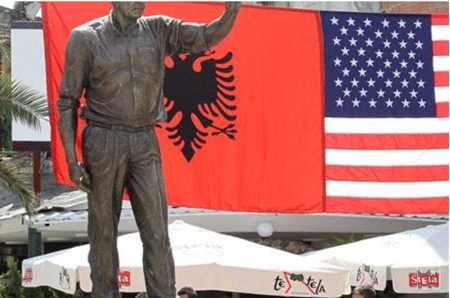
George W was the first US President to visit post-communist Albania in 2007. He was instrumental in helping them join NATO in 2009.
In appreciation of W’s efforts, a tiny Albanian village (Fushe Kruje) even erected a statue in his honor and named their square after him.
The only picture I could find of the statue has George W’s head cut off. I’m not a W fan, so I’m ok with that.
And Now, Back to the Antique Store
The antique store owner seemed genuinely pleased to get to know us, and asked if we’d join him for some Raki. Soon enough we learned his name was Meril.
I’d read quite a few warnings about Raki, mainly to be darn careful because it’s very strong. But I’d also read that it’s a great Albanian tradition, and I didn’t want to be rude.
Raki For Three
Raki is a sort of fruit brandy typically made from grapes, but also made from plums, mulberry, or even walnuts, depending on the region. It’s the Albanian drink of choice every time.
Raki can be distilled normally or left to age in oak barrels, and its strength varies from 30% or more, sometimes much more. Many Albanians brew their own at home, in fact, the shopowner’s mother made the Raki we were about to imbibe.
It Looks Harmless
Meril walked to the front of the store and bent down behind his desk. He brought back a clear glass bottle, the size of a wine bottle. It was almost filled to the top with a clear liquid that looked just like water.
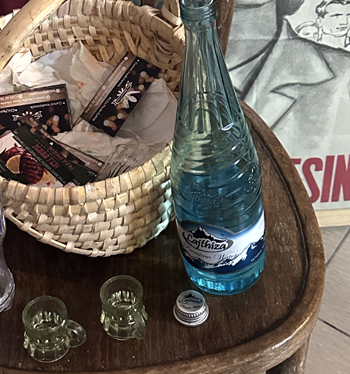
On the tray with the Raki were three very tiny glass cups that looked exactly like tiny beer mugs. He filled one and handed it to Steve. Steve’s was filled to the brim. I looked at Mirel, and, pointing part way up my tiny cup, motioned for him to pour me half.
Pick a Language
Meril started objecting in Albanian (at least I think he was…he is a French Professor, but also speaks Italian and English, so it could have been any language really). In any case, he was definitely objecting in one of his four languages, but I’m sure it wasn’t English.
An Albanian Treat
He immediately started motioning with one hand, starting up at his chin, then dragging his hand methodically down his neck, further down across his chest, finally stopping at his lower belly. Up and down, up and down, he repeated the motion several times. He was trying hard to make a point.
He then stated that Raki is good for digestion (that seems unlikely). I was afraid that I understood all too well what he was trying to communicate – that feeling you get when you drink high octane alcohol, and that’s exactly what I was trying to avoid.
Cheers!
Then we clinked glasses and shot our little cups of Raki on down the hatch, so to speak. And it burned…and it burned…and it burned…all the way down. It was just as Mirel had motioned repeatedly. From the neck on down to the base of the belly. You really could feel the Raki doing its thing.
Even though I could barely catch my breath, and portions of my body were on fire, I’m very glad we had an authentic Raki experience. Nothing could be more Albanian.
The Past
We were looking at the propaganda posters and magazines dating from the 1940’s through early 1990’s when Meril told us about his family’s past. His father was the original owner of the Antique Store, but passed away during Covid. So very sad.
Propaganda

Meril volunteered that his father had a hard time seeing the propaganda in his own store. In 1946, Albania had just become a communist state under The People’s Socialist Republic of Albania.
Meril’s father, age 35 in 1946, was suddenly imprisoned for ten years. His “crime” was having a father (Meril’s grandfather) who had been very wealthy.
It didn’t matter that his father had passed away when he was just a baby, he had to pay for the “capitalist greed” of his father with ten years of his own life.
Ten years!
One-Party Rule
Albania was ruled by the one-party communist state for forty-five years, 1946 to 1991. The Republic of Albania was proclaimed in spring of 1991 and the country’s first parliamentary elections were held in March of 1992.
Albania is currently a parliamentary republic. The country has applied to become a part of the European Union. Before being accepted, they have challenges to overcome in the fairness of the judiciary, media independence, and corruption in politics, although they are making great efforts in these areas.
Religious freedom and freedom of assembly are generally respected.
The Albanian people we’ve met are very proud of their country and all the hardships they’ve overcome. We’ve found them to be very kind and friendly.
Chance Encounters
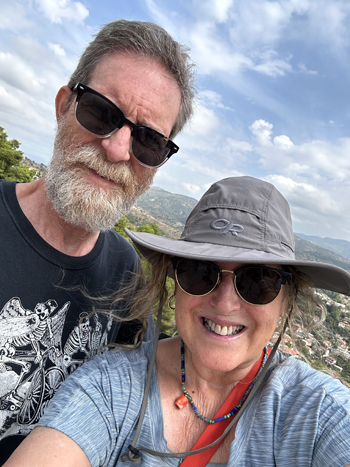
When traveling, it’s the unexpected, the things you can’t schedule or plan for, that are often the best and most cherished memories.
We are so thankful that we met Meril and that he chose to share some of his family stories, as well as his homemade Raki with us. What an unexpected, up-close peek into Albanian history from a first person source.
Cheers!
Wins & Losses
Wins
All Are Welcome: The Albanians are very tolerant of religious differences. The Christians and Muslims have coexisted in harmony in Berat for centuries. In fact, during WWII, the citizens of Berat hid (and saved) over 600 Jews.
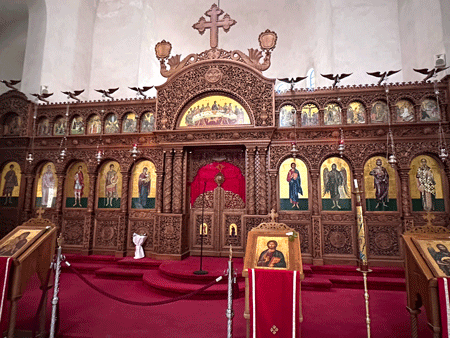
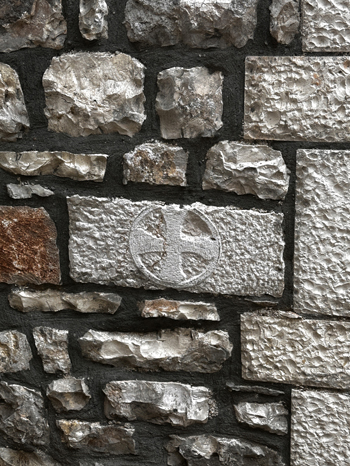
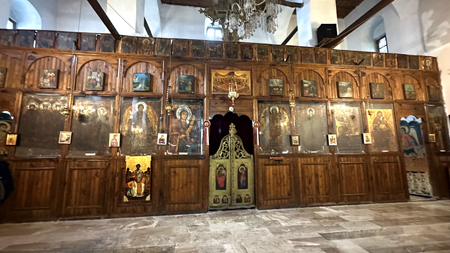
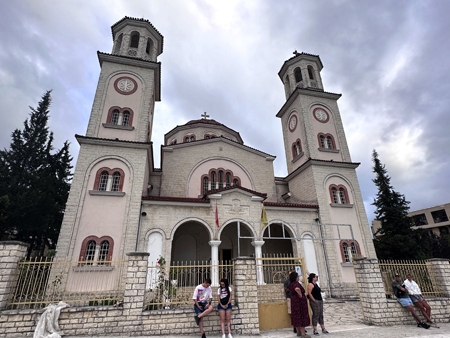
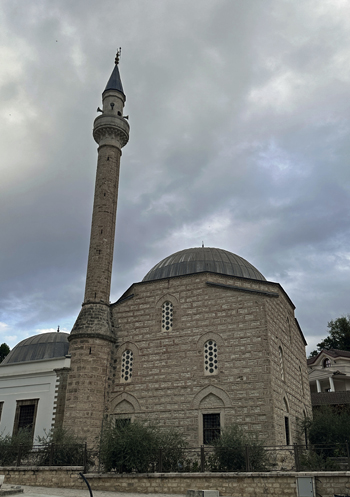


Costs: We are happy to report that the prices in Berat are about 25% less expensive than the southern coastal towns. Good news! We can eat a meal, with beer, for 700 to 1000 lek, or $7-10 US dollars.
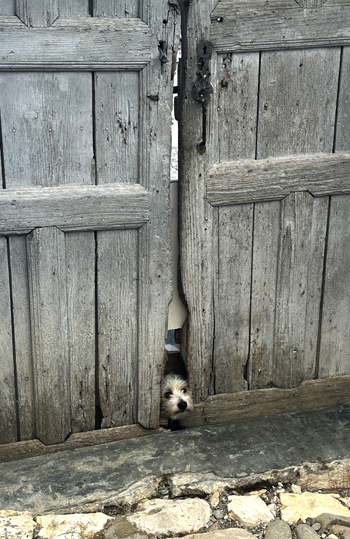
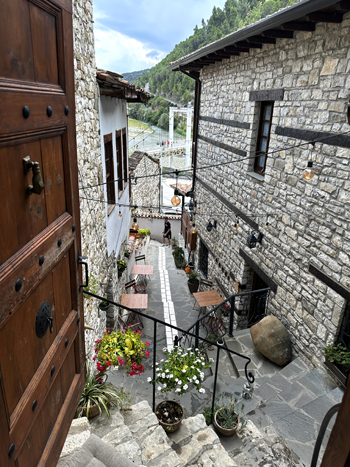
Medieval Towns: Berat reminded me of another town I fell in love with years ago in Spain, namely Toledo. Both are medieval towns. They both have hilly, cobblestone, winding alleys clinging to a steep hillside.
And you never know what you’ll find around the next corner. Sometimes you even find a cute little dog sticking his face out of a hole in the gate.
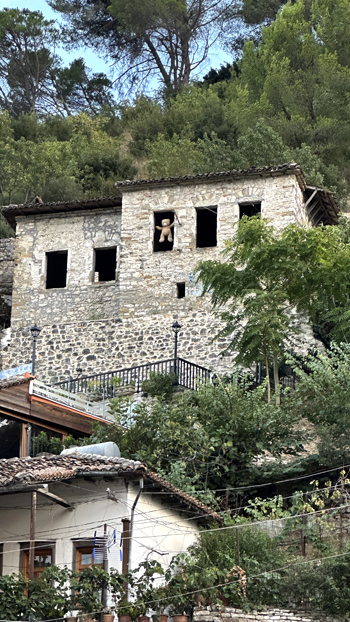
The Teddy Bear Factor: Albanians hang teddy bears or dolls on their fence or outside their home to ward off evil spirits. Here’s one huge teddy bear in a window, way up high on the hillside.
Losses
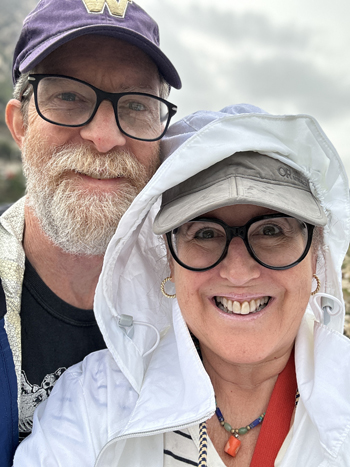
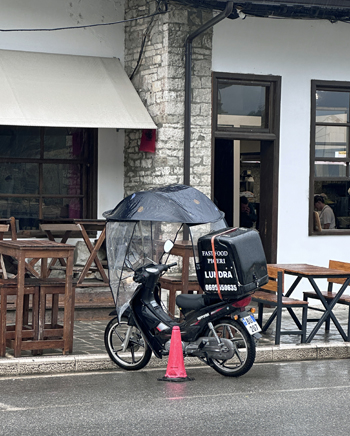
Rain, rain, rain…we got caught in a torrential downpour with thunder and lightning on our second day in Berat. We had made our way on foot in a light rain to a highly rated, family run, pizza place about 10 minutes from our hotel.
We’d been served our pizza at our outside table, under an umbrella, when the sky opened up and the deluge began. Even though we were under cover, the rain was coming at us from all directions.
The proprietor, pizza-maker extraordinaire, frantically motioned to us to come into the cramped restaurant. where she threw the dough from scratch. We, along with two other couples, one with a baby, rushed into the small space.
We were in close quarters, but were all happy to huddle together and finish our pizzas out of the rain and wind. The heat from the pizza oven kept us all warm & cozy.
The TV: We haven’t had any English speaking TV stations in a month, until now. There’s one tv station available at our hotel that plays all guy-movies, all day. They’re in English with Albanian subtitles. It’s been very rainy, so we’ve watched a bit more than we normally would. War movies, car-chase movies, Sylvester Stallone movies, and Star Wars. Not a Rom-Com in sight.
TP: Just wanted to update you, the reader, that we are still unable to flush our tp down the toilet. So there’s that. And we have another wet bathroom here in Berat (see Himarë post). So be it.

